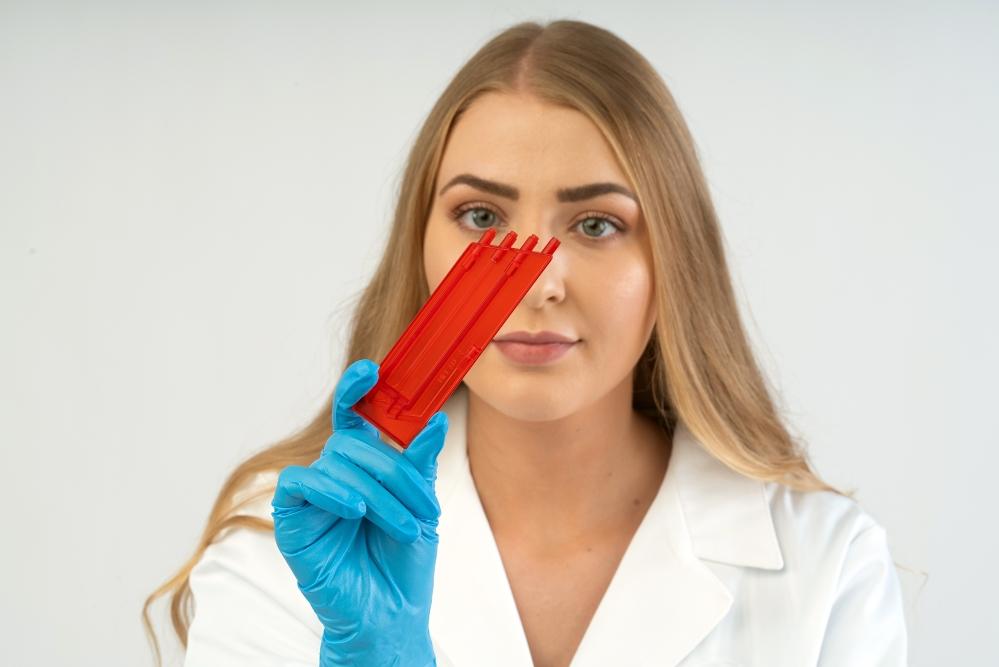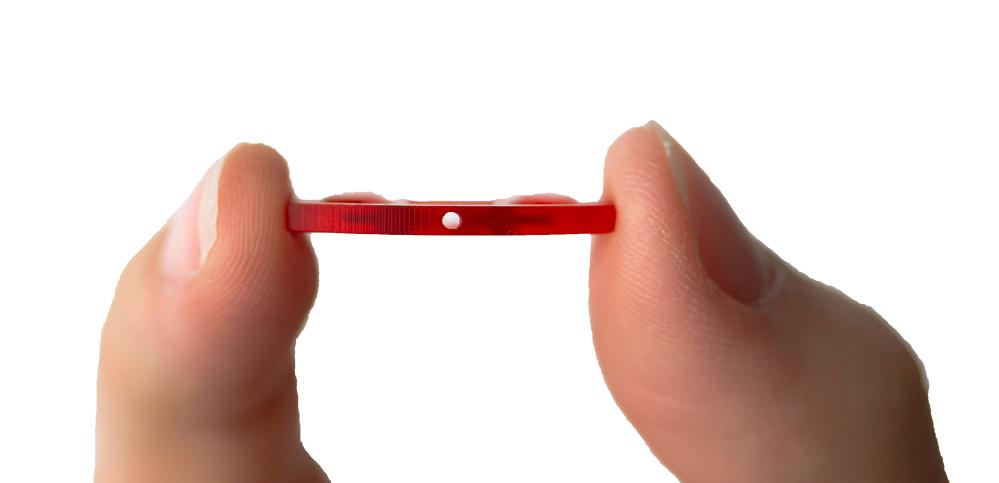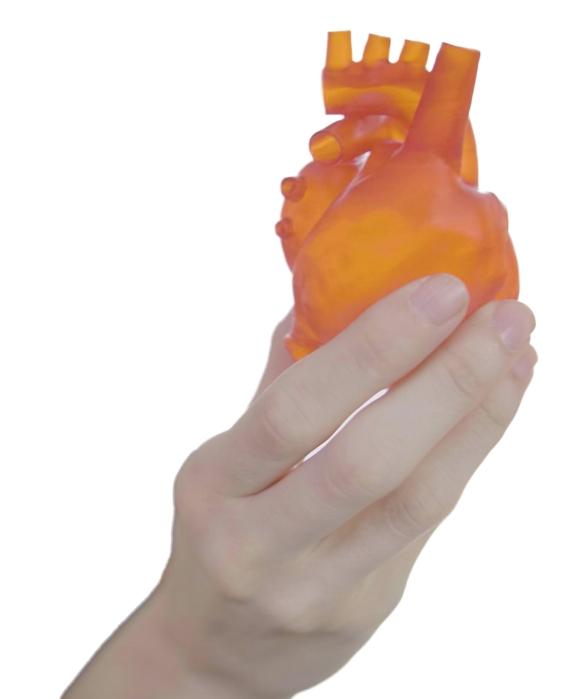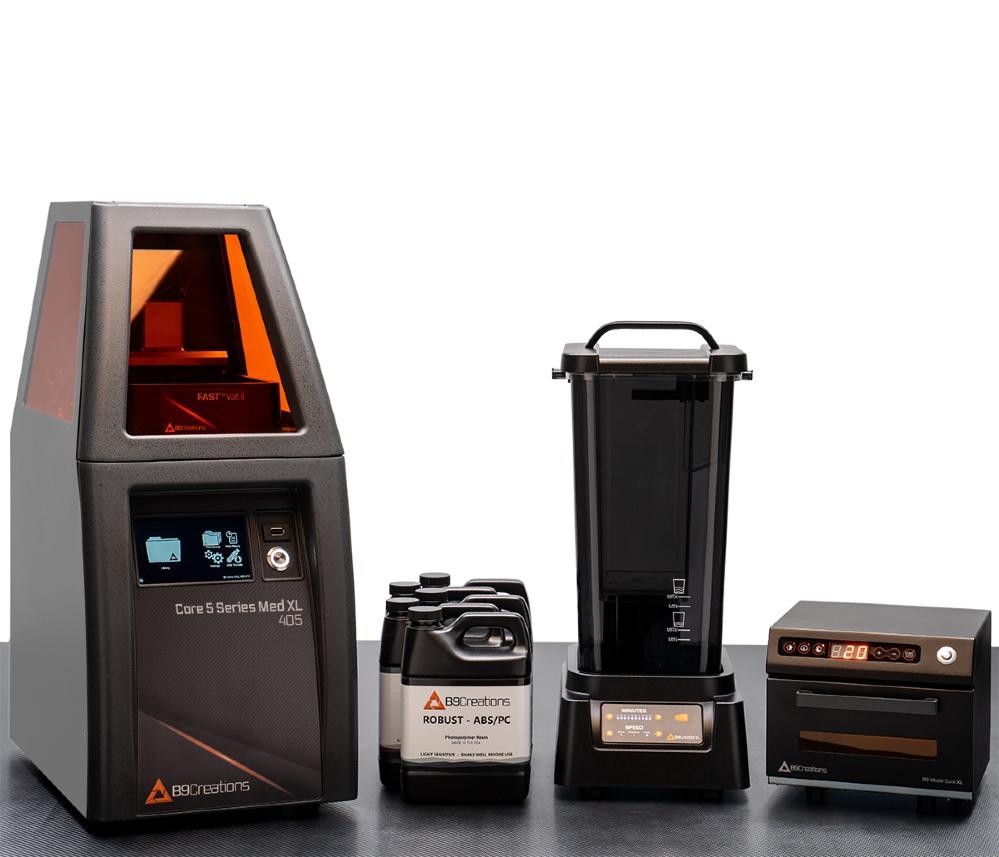- FMA
- The Fabricator
- FABTECH
- Canadian Metalworking
Our Publications
Categories
- Additive Manufacturing
- Aluminum Welding
- Arc Welding
- Assembly and Joining
- Automation and Robotics
- Bending and Forming
- Consumables
- Cutting and Weld Prep
- Electric Vehicles
- En Español
- Finishing
- Hydroforming
- Laser Cutting
- Laser Welding
- Machining
- Manufacturing Software
- Materials Handling
- Metals/Materials
- Oxyfuel Cutting
- Plasma Cutting
- Power Tools
- Punching and Other Holemaking
- Roll Forming
- Safety
- Sawing
- Shearing
- Shop Management
- Testing and Measuring
- Tube and Pipe Fabrication
- Tube and Pipe Production
- Waterjet Cutting
Industry Directory
Webcasts
Podcasts
FAB 40
Advertise
Subscribe
Account Login
Search
3D-printed devices help the disabled perform hard-to-perform tasks
A South Dakota additive manufacturing company helps a nonprofit put assistive devices in the hands of people with special needs
- By William Leventon
- September 28, 2021
- Article
- Additive Manufacturing

The finger splint shown here and the devices depicted in the next two images were 3D-printed from B9Creations’ BioRes Red, a medical-grade resin formulated for applications ranging from prototypes to production runs in the thousands. Images: B9Creations
A 3D printer builder based in Rapid City, S.D., is giving a big assist to a hometown organization’s efforts to produce helpful devices tailored to the individual needs of people with disabilities.
B9Creations LLC has announced plans to donate additive manufacturing equipment to the assistive technology team at Black Hills Works (BHW), a nonprofit that provides various forms of aid to adults with disabilities.
“I have a long relationship with that organization,” said B9 CEO Shon Anderson. “When they approached us about assisting their technology team, it was a no-brainer because I love what they do.”
Since 1958, Black Hills Works has provided housing, employment, and recreational and social opportunities for adults with disabilities in the Rapid City region. The nonprofit currently supports nearly 600 people with various disabilities, working to create a community in which everyone participates to achieve a life of full potential.
Helping Hand
Assistive technology is any device, product, or service that helps people do something they couldn’t otherwise do or do well, explained Tammy Murner, director of innovation and assistive technology at BHW. Such devices commonly help users with tasks like eating, dressing, and entering their homes.
To produce assistive devices or key parts of them, Murner and her team will be taking delivery of a complete additive manufacturing system featuring B9’s Core series Med XL printer. A medical upgrade to the company’s Core-series 3D printers, the Med XL is compliant with IEC medical equipment standards.
Anderson described the Med XL as a high-precision printing device designed primarily for medical and biometric applications. Employing digital light processing technology, the machine uses plastic resins approved for temporary skin contact to print human-interaction components and devices.
According to B9, the printer features a large build volume (124 by 70.2 by 127 mm) and operates at a resolution finer than 25 microns and print speeds exceeding 85 mm/hr.
For postprocessing, BHW will receive the B9 Model Cure XL, a system designed to reduce resin curing times, and the B9Clean XL, an automated cleaning unit. B9 also will provide the agency with a supply of biocompatible and engineering-grade resins.
The printer currently is being operated at the B9 facility, to help with training needs. It will transition to the BHW facility when the agency onboards a dedicated technical specialist in the coming months.
Old Versus New
According to Murner, the Med XL is a significant upgrade over the team’s old filament-style printer. That printer “was super-technical and hard to use. There was a lot of bed leveling and tweaking involved.”
In addition, items made by the old printer didn’t always come out smooth, and the printing wasn’t as accurate as the team would have liked. The new printer is an improvement in those areas as well, Murner noted.
“There are a lot of things you can do with it that we couldn’t do with the 3D printer we had,” she said. “If we want something smooth on the bottom and then rougher on the top for a grip, you can do that with the new printer.”
Another difference between the old and new printers is the time it takes to print an object. With the old printer, the process could take 10 to 12 hours, Murner noted. Printing time is about half that with the new printer, which is especially advantageous when iterating a design.
As to why BHW team members decided to produce assistive devices in the first place, they saw it as good way to meet the unique needs of individual clients.
“A person may have a hand disability, so you try to print something that enables that person to grasp a spoon or fork easily,” Anderson explained. “But no two hand disabilities are alike. So you need to be able to customize the assistive technology.”
That often means customizing a commercially available product in some way rather than printing an entire device. In some cases, an off-the-shelf product “might work well for a person we are supporting,” Murner said. “But if we tweak it just a little bit, it makes it much more useful and easier [to use].”
In-House Advantages
Black Hills Works could outsource such work to a 3D printing service bureau. But Murner said this would be a lengthy and costly process compared to printing in-house.
Anderson agrees. “It may take multiple iterations to land on a design that works best for the client,” he noted. With an in-house printer, “If a design needs to be modified, you can modify it and print it again the same day—and have something in your hand for maybe $10 or $15 in materials.”
On the other hand, he said, BHW could easily spend $500 on just two product iterations performed by a service bureau, then wait weeks for the work to be done.
Organizations like BHW can purchase the 3D printing equipment and materials they need for well under $20,000, Anderson said. What’s more, he added, they’ll find the technology much easier to use than it was just a few years ago.
Besides equipment and materials, users need some basic product design knowledge and the ability to produce CAD files. So Murner and her team enrolled in online CAD classes and are collaborating with B9 personnel on product designs for their clients.
“If someone they’re caring for has a need, they bring [the person] to us and we have meeting,” said Ethan Hartmann, an engineering intern at B9 who has been working with the BHW team. “We talk about what they would like from the final product—the actions it should perform. Once we have an idea about where we want to go, we bring it to CAD.”
Once the first iteration of a design is printed, it’s given to the client to try out. Clients “give honest feedback and are not always nice about it,” Hartmann said. “If something doesn’t work, they tell us and we fix it and send it back.”
Hartmann and the BHW team have tackled a number of small projects together. These include producing a customized spoon handle that makes it easier for a man to feed himself, and a plastic enclosure for a door-opening remote control that helps a wheelchair-bound man who was having problems with the remote’s buttons enter and exit his apartment unassisted.
Other assistive devices that could be printed for BHW clients include special push buttons, custom switches, and mounting systems for phones and tablets.
When you have to buy specially designed products for people with disabilities, “the price goes up tenfold,” Murner said. “And a lot of our folks are living on a very limited income. So if we can give them a device that works and costs less than half of what we could buy it for, that’s a win-win.”SIDEBAR 1
BHW operates businesses that employ disabled adults
Information provided by Black Hills Works
For more than six decades, Black Hills Works has provided adults with disabilities homes, employment, and recreational and social opportunities. BHW currently supports nearly 600 people who have a wide array of disabilities, creating a community where everyone participates to achieve a life of full potential.

In a statement announcing the partnership between Black Hills Works and additive manufacturer B9Creations, the company’s CEO, Shon Anderson, said, “Assistive devices are vital to people’s lives but are often costly, time-consuming to produce, and unable to meet individualized needs.”
One goal of the nonprofit organization is to offer people with disabilities employment in a supportive environment. Its business ventures have varied widely during its history, from a sawmill and a farm to an art gallery and a recycling center.
Today, BHW operates five businesses, including an electronics recycling center called EchoWorks that serves the Rapid City area.
SIDEBAR 2
B9Creations targets high-volume AM applications
Though rapid prototyping offerings are part of its portfolio, B9Creations mainly has its sights set on more ambitious uses for additive manufacturing.
“We focus on making additive manufacturing perform at scale,” said the company’s CEO, Shon Anderson. “In our industry, the holy grail is using additive manufacturing not just for prototyping or assisting with design iteration, but to produce end-use parts that can be made in the hundreds, thousands, hundreds of thousands, or millions.”
Founded in 2004 as a robot manufacturer, B9’s 3D printing work dates back to 2011. Today, the company works with customers, certified dealers, and strategic partners in nearly 70 countries. Headquartered in Rapid City, S.D., with offices in Dallas and Denver, B9 supplies AM equipment and services to firms of all sizes in industries such as health care, aerospace, jewelry, and entertainment, as well as organizations engaged in education and research.
For industrial AM, B9 offers its Core Series 3D printers, which are designed to handle both rapid prototyping and volume manufacturing applications. Users include 3M, Procter & Gamble, and General Electric.
In addition to manufacturing 3D printers, postprocessing equipment, and resins, B9 operates a 3D printing service bureau that works with customers from small design shops to Fortune 500 companies. Services include rapid prototyping, tooling manufacturing, and printing production volumes of parts.
When it comes to competing with conventional volume-production methods, Anderson thinks the latest 3D printing technology has a number of things going for it. For one, AM production costs are coming down rapidly. And processes such as injection molding and milling have major downsides, such as they waste a lot of energy and materials and don’t allow customization, he said. They also require large, centralized production facilities.
“With additive manufacturing, you can do distributed production,” Anderson noted. “That hit everyone’s radar screen last year [at the peak of the COVID-19 crisis], when people figured out that centralizing production in one or two places isn’t good for supply chains.”—W. Leventon
About the Author

William Leventon
(609) 926-6447
About the Publication
- Podcasting
- Podcast:
- The Fabricator Podcast
- Published:
- 04/16/2024
- Running Time:
- 63:29
In this episode of The Fabricator Podcast, Caleb Chamberlain, co-founder and CEO of OSH Cut, discusses his company’s...
- Trending Articles
- Industry Events
16th Annual Safety Conference
- April 30 - May 1, 2024
- Elgin,
Pipe and Tube Conference
- May 21 - 22, 2024
- Omaha, NE
World-Class Roll Forming Workshop
- June 5 - 6, 2024
- Louisville, KY
Advanced Laser Application Workshop
- June 25 - 27, 2024
- Novi, MI






























